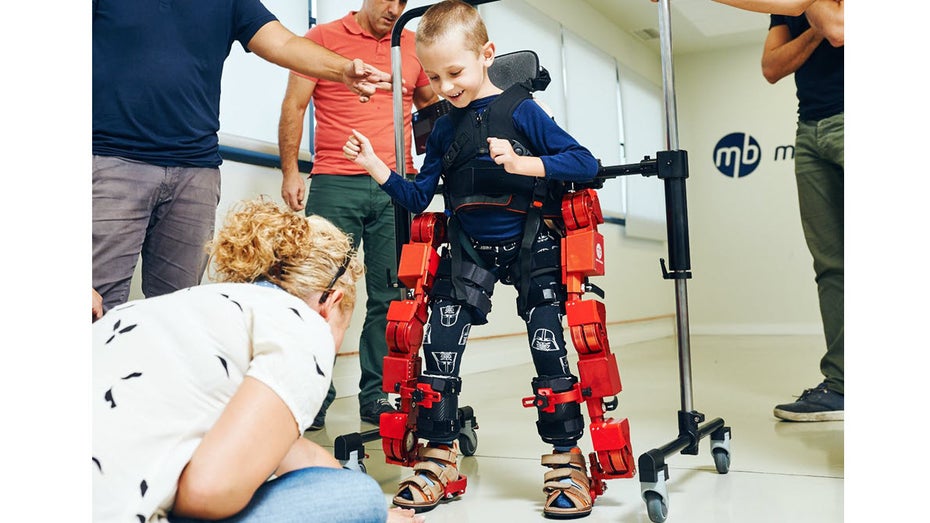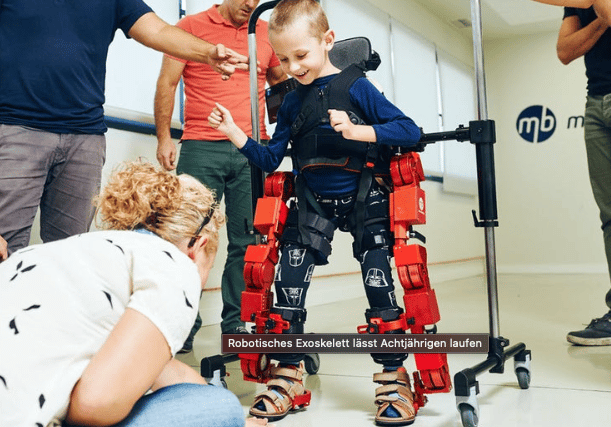With the help of a robotic titanium exoskeleton, an eight-year-old Mexican boy learns to walk after being confined to a wheelchair for most of his life.

The boy suffers from neurological disorders summarized as cerebral palsy. This type of disorder appears in early childhood and progressively impairs the affected child's ability to control his muscle movements.
Award-winning exoskeleton inspires physiotherapists
Affected children lose or do not even learn the ability to walk or perform other controlled movements. Even maintaining balance becomes a challenge. There is now hope for an eight-year-old boy.
David Gardoso was selected to test the Atlas 2030 battery-powered exoskeleton by award-winning Spanish roboticist Elena García Armada. The invention is listed with the European Patent Office as the "world's first adaptable robotic exoskeleton for children" and earned its creator the 2022 European Inventor Award.
The Atlas 2030 exoskeleton focuses primarily on the child's lower body. The legs are strapped to the robot legs of the exoskeleton. Software ensures adapted mobility.
Eight-year-old David is thrilled with his new helper, as his mother reports. His physiotherapists are also convinced by the measure. After just a handful of physiotherapy sessions with the exoskeleton, David has already made significant progress.
Exoskeleton offers "rehabilitation in record time".
The exoskeleton is expressly intended as a therapy option - not as a permanent replacement for dwindling muscles and neurological control. Depending on the severity of the diagnosis, affected children can already be helped to achieve a largely autonomous ability to move with physiotherapeutic and in some cases surgical measures.
However, instead of the orthoses that have been primarily used to date, treatment with the exoskeleton would be much more dynamic and thus more promising. Thus, the Association for People with Cerebral Palsy in Mexico hopes to use the device to help over 200 children with cerebral palsy throughout the country.
Guadalupe Maldonado, who heads the association, sees psychological aspects in addition to the purely technical advantages of "rehabilitation in record time." Vis-à-vis Euronews she is convinced that the exoskeleton awakens the children's fighting spirit to take a more active stance against their illness.
Source: Robotic exoskeleton lets eight-year-old walk (t3n.de)(23.10.2022)
